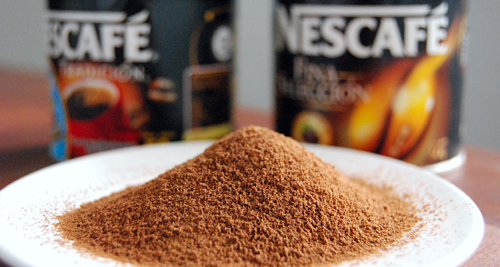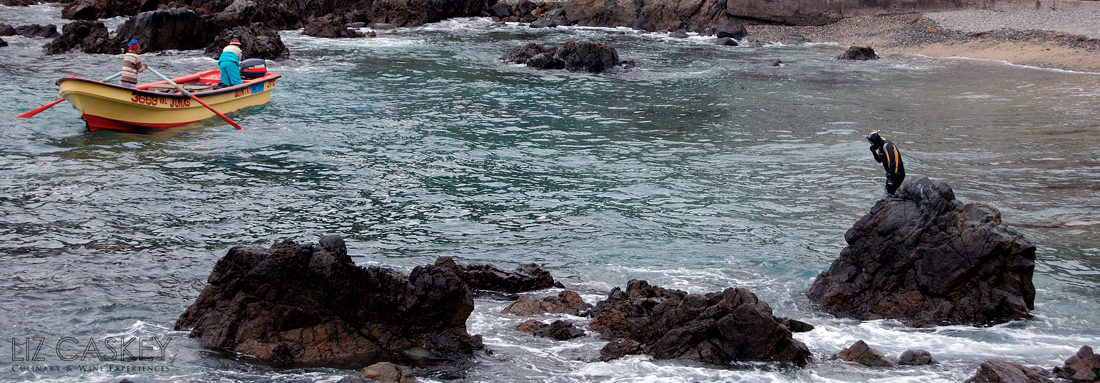
If you live in Chile, travel here, or try to google anything about coffee in Chile, you will no doubt come across “Nescafé”. Yep, it’s rampant. Sure, it seems like an oddity given that we are next door to Colombia, Peru, and Brazil where they grow amazing beans. Let’s face it, Nescafé sucks. There’s just no comparison to real coffee. The powdered stuff tastes similar to saw dust with a bitter aftertaste. Truth be told, most people are drinking it for the drug (caffeine) and convenience. So let’s explore a little how Nescafé became so engrained in these latitudes and how the trend is thankfully shifting. Is there really no bonified coffee to be had in Chile?
It all started in the 1970s when Nestlé embarked on a massive marketing campaign to push it in the local market. Prior to that, Chileans drank regular coffee, known now as “cafe-cafe”, or even coffee made from toasted wheat in the countryside. Nestlé invaded and began selling its tins of powdered coffee on silver trays. They positioned the product as the “best”, as “easier”, as “elegant and sophisticated”. And people bought it. And once the habit is engrained, especially since it was everywhere, it is hard to go back. This may have been how Nescafé came to get its ground in Chile but it doesn’t explain how it has endured for over three decades. In my experience, Nescafé has become massive for the following reasons:
1. It’s easy to prepare. Just boil water (in the electric tea kettle), dump, stir, listo. Chileans tend to eat breakfast very hurried so this requires zero preparation. No special machines, no grinding beans, no thinking basically.
2. It’s an excuse to add copious amounts of milk and sugar. I am convinced this is one of the reasons it is still so popular because they dilute it and sweeten it to cover its awful taste. I have never, ever seen anyone drink Nescafé black; well, except myself and my husband in last ditch, must-have-caffeine situations like trekking.
3. Its shelf life has no expiration date. Great! You can keep it for years, really practical since Chileans tend to gravitate more heavily towards tea. My theory is that the stuff is probably like margarine and never goes bad. So do you really want to be drinking that?
While in Chile, just know that if you ask for café in most pedestrian joints, you will be getting Nescafé. If you want real coffee, you must ask for cafe-cafe, a cortado (frothy latte), or an espresso. In 2003, Starbucks entered the scene and its clones have spread throughout the city. As much as I am not into the whole coffeehouse chain deal, it did some thing miraculous–it got people to start thinking about drinking better coffee. It put a space around stopping for a coffee, meeting, hanging out. And coffee houses began to pop up all over the city, especially in artsy neighborhoods like Lastarria and Bellas Artes in the downtown and even out in the far flung burbs. Today, the younger generation seems to be more coffee conscious and I am praying that in another 10 years, Nescafé will be something antiquated. Even in mega supermarkets like Jumbo, you can now find Café Britt from Costa Rica, Illy pods, Mussetti from Italy, Colombian dark roast, Turkish and German espresso blends. Hallelujah.
For some good beans, I usually hit up Coffee Club in Santiago at Pedro de Valdivia metro stop. The owner imports them (organic or fair trade) from Colombia, Peru, Ecuador, even Indonesia. I also buy them whole at Café Haiti throughout the downtown although the quality is not as good (price is cheaper for sure). However, I will confess that when I travel up North to the US, the novelty of real freshly brewed, American-style coffee never wears off. In fact, landing on US soil, it’s the first thing I must have. And yes, I do stock up on Peet’s Coffee or Jack’s Stir Brew in the northeast.
But it is changing, evolving here. But if you are a coffee fiend, bring a stash to Chile. Seriously.












